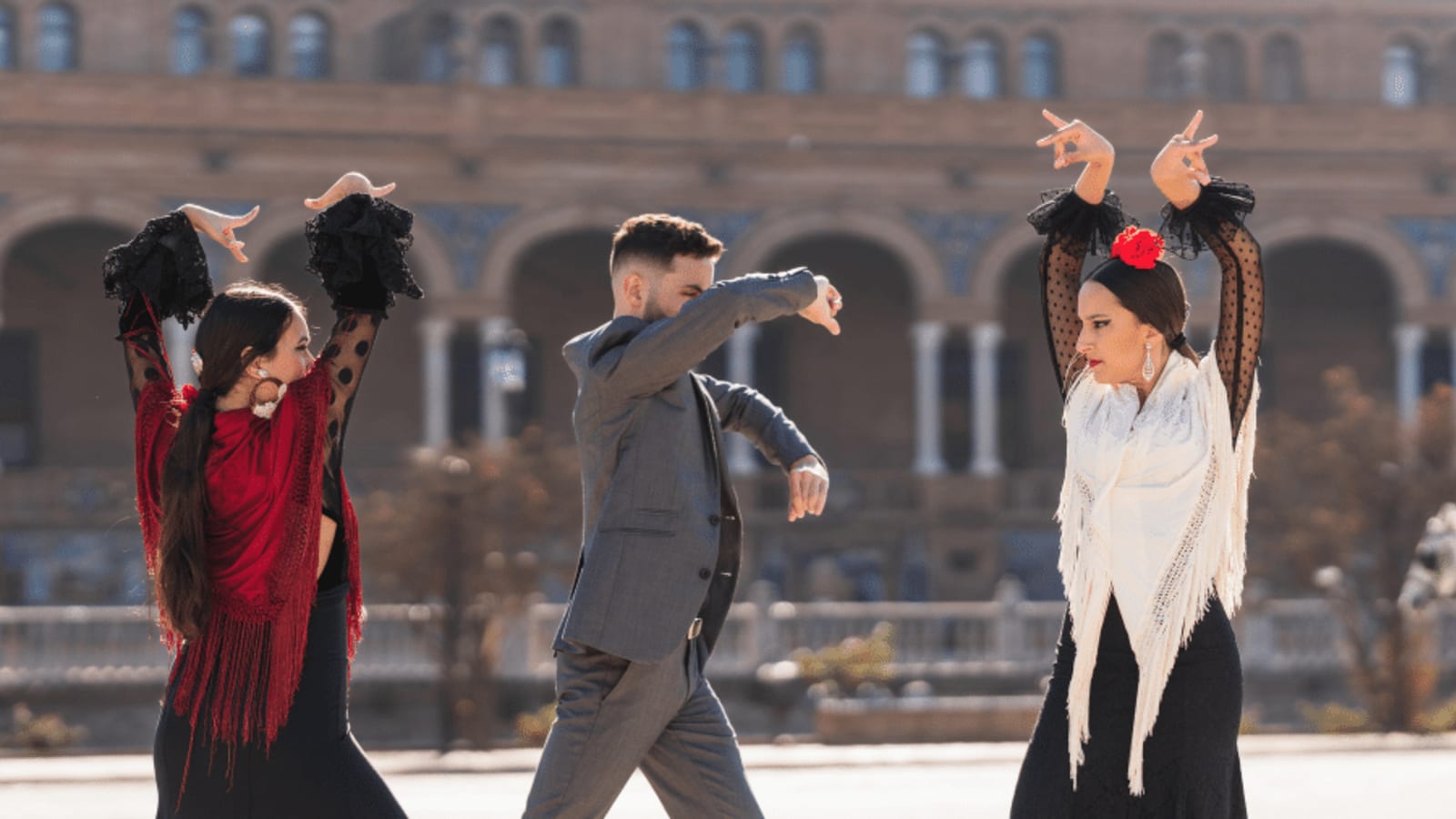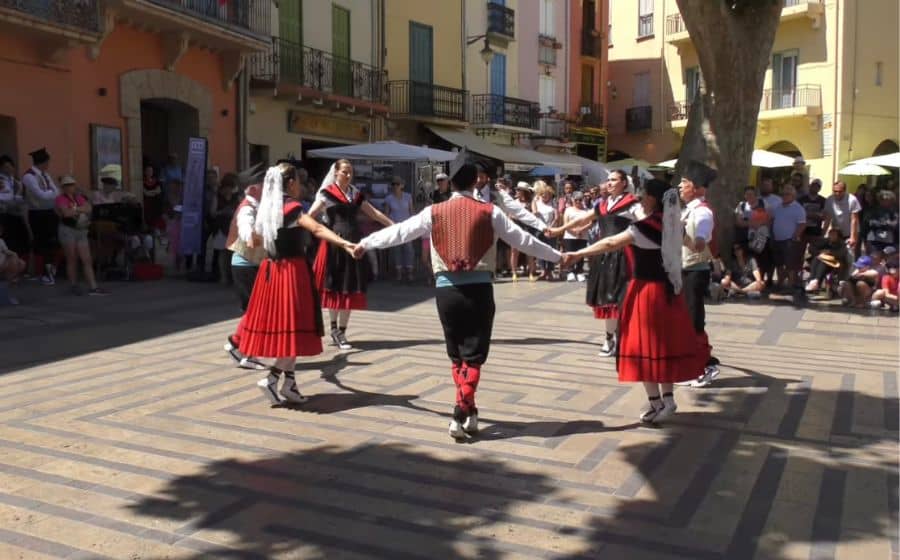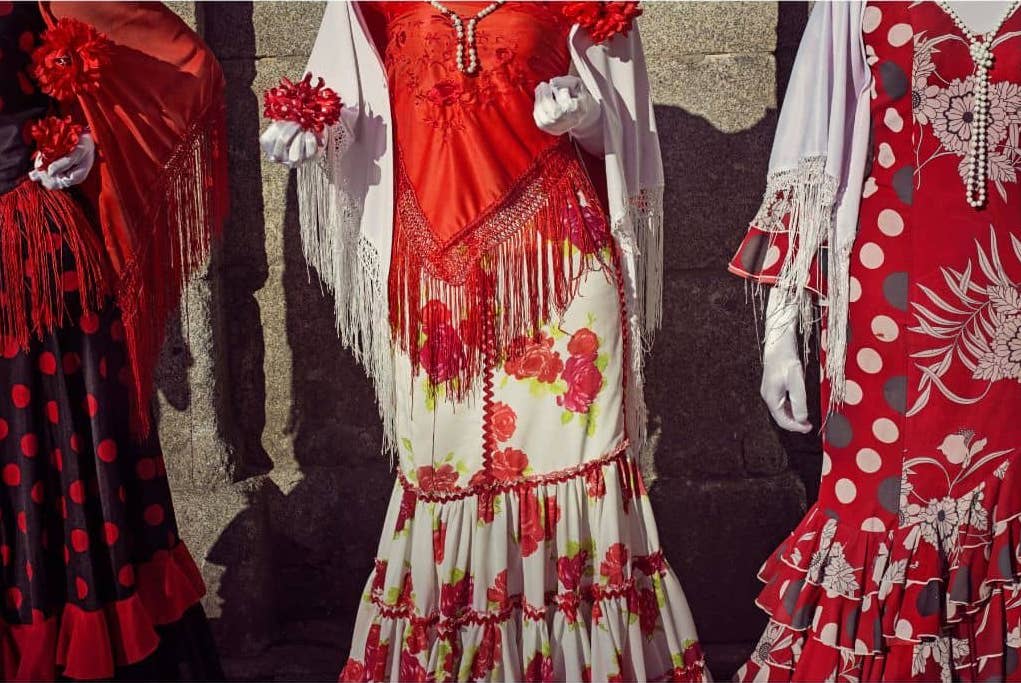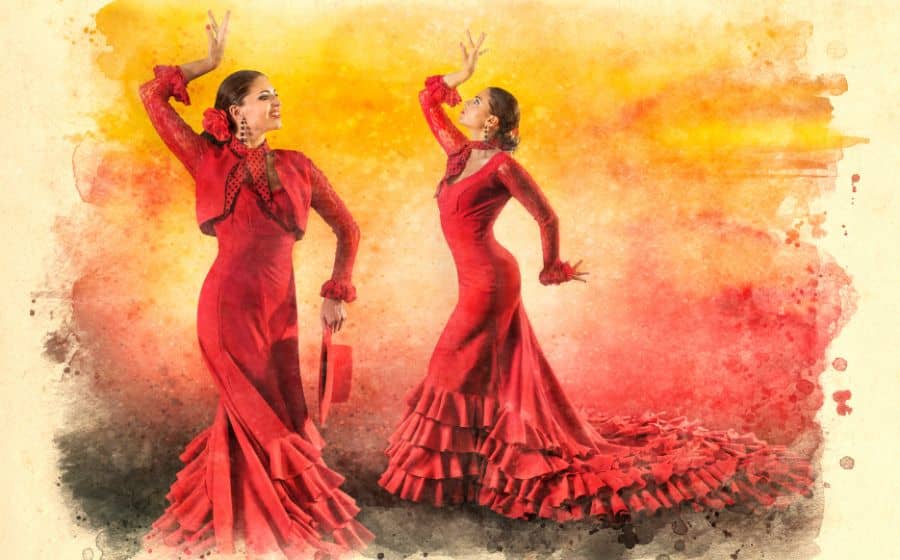9 Popular and Traditional Spanish Dances That Will Last Generations
November 10, 2022
Win a FREE Trip to Spain!
Exciting Announcement! For the first time, we're thrilled to offer exclusive trips to the heart of Spain - an experience like no other. This isn't your typical tourist journey; it's a unique opportunity to immerse yourself in authentic Spanish culture, alongside real locals and our passionate team.
But there's more! Simply by requesting information about this amazing trip, you'll be entered into a special draw to win a Fully Paid Trip to Spain for Two. And that's not all - everyone who inquires will receive an exclusive bonus gift, valued at $500, available only now.
Ready to Discover the Real Spain?Click Here ↑ to Request Information & Enter the Draw!
Spain is a country with a great cultural variety. Both music and dance play a significant role.
Probably, when you think of Spanish dance, the first one that comes to mind is Flamenco, but Spain has other traditional dances that have been passed down from generation to generation.
In Spain, you will find joyful and colorful dances where the protagonists wear spectacular regional costumes to represent their roots and the place’s culture. You can enjoy these incredible dances live during the regional festivals, so check the calendar to ensure you don’t miss any of them!
If you feel like immersing yourself in the Spanish culture, check out our nine most typical dances!
P.S.: I have included a video in each of them in case you want to learn the steps!

Table of Contents ▼ ▶
1. Flamenco

It’s crazy that of all the Andalusian dances, flamenco is the best-known internationally! When did everything start? The first flamenco dance dates back to the 18th century, and its origin is primarily due to the gypsy ethnic group. Since 2010, flamenco dance has been considered by UNESCO a World Cultural Heritage.
Flamenco dance has been going on from generation to generation, that’s why behind flamenco dance coexist some unique rules and traditions that have given rise to a language and expressions like ¡¡OLÉ!!, or “Duende,” which the RAE (Royal Spanish Academy) defines as mysterious charm.
What instruments do you need to play flamenco? Well, you need the famous “palmas” (hand clapping), the voice, the popular “jaleo” and a Spanish guitar. A flamenco guitarist is called a “tocaor,” and a dancer is called a “bailaor” or “bailaora.”
The typical flamenco outfit is called “Traje de Flamenca” Dresses are made to represent a guitar-shaped body to enhance the woman’s figure. Heels or “alpargatas” are essential, ranging from 4 to 7cm in height.
Did you know that from 1920 to 1955, many flamenco shows took place in bullrings and theaters? These places became known as “Opera Flamenca.” This name became very popular because opera paid lower tax rates than flamenco shows, so it was more economical.
If you want to know more about this typical Spanish cultural art, I recommend you to read the following articles:
Walking through any Andalusian street, you will find many souvenirs. But the one I recommend you to buy and the most typical souvenir would be the girl dressed in Flamenco.
2. Sevillanas
What’s the other iconic dance in Andalusia? The beautiful Sevillanas! They are one of the most excellent dances in Andalusia. They are very popular during the April Fair in Seville and Rocío Pilgrimage in Huelva. However, Sevillanas has become famous throughout Western Andalusia.
If we go back in history, the dance dates back to a time before the Catholic Monarchs, when they were known as “Seguidillas Castellanas” (Castilian Seguidillas). However, with time, the flamenco component was introduced and ended up receiving the name of Sevillanas.
Let me give you some advice! Many people need clarification on Flamenco and Sevillanas as they are similar, but they are different dances.
Sevillanas are usually danced in couples to the sound of the four “coplas” (in which it is divided). This particular dance will be choreographed to a pre-established routine, while in Flamenco, you don’t do anything like this. In Flamenco and Sevillanas, the fundamental instrument they have in common is the Spanish guitar.
Nowadays, you can learn the Sevillanas easily as there are many academies worldwide.
3. Sardana

Everything you need to know about Sardana dance is here. The Sardana is a dance that originated in Catalonia and spread to Andorra.
It’s a collective dance in which the participants hold hands and stand in a circle formed by women and men. The dancers alternate so that there’s a woman on each side between a man. The ring follows a pattern of woman-man-woman-woman-man, and so on.
The Sardana is divided into seven to ten tirades, during which they alternate between short and long steps. The music accompanying this dance is played by a “cobla,” a band composed of twelve wind instruments with a double bass.
Can I join a Sardana if I see them on the street? Yes, you can! As it’s a popular dance, Sardana is performed at public gatherings and is usually open to everyone that wants to join them. Just be careful not to separate a male and female partnership, as we said before.
The dance doesn’t require any physical strength; therefore, it’s not uncommon to see people of all ages participating.
If you want to learn more about this dance, take a look at this article:
When visiting Barcelona, the Catalan capital, check out the calendar of local celebrations on the local council’s website. There are frequent performances open to the public which take place in the square in front of the Cathedral and on this webpage they tell you all the details about it.
4. Chotis

If you were wondering about the typical dance par excellence in Madrid, that’s the Chotis! As I’m from Madrid, I have the chance to live this festival every year.
When I was a kid, I used to get dressed and go everywhere in my Chotis dress. It’s a traditional ballroom dance celebrating San Isidro every 15 of May.
The name given to this dance comes from the German word “Schottisch,” which means Scottish. It became a fashionable dance in Scotland during the 19th century, and little by little started spreading to America, giving rise to different variations of the same dance.
The Chotis is danced in couples accompanied by the music of a barrel organ. Very little space is needed; the man remains in one place with his feet together. Without letting go of her partner, the woman moves around him, making him turn. She will move by taking crossed steps and tracing in space trajectories like eights, forward, or backward.
If you want to know how Spanish people dress to dance the Chotis, you can’t miss this article!
In Spain, there’s evidence that it was danced for the first time in Madrid in 1850. Queen Isabel II organized a party at the Royal Palace, announcing that a German polka was going to be danced. And from that day on, the Chotis came to stay in Madrid.
5. Muiñeira

What can I say about one of my favorite dances? As I go to Galicia and Asturias every summer, I know how unique this dance is!
The Muñeira in Galicia is a viral dance, not only here but also in Asturias and Castilla y León. In fact, the Muñeira is nothing more than a Galician Jota; many people refer to this dance by this name.
Muñeira, in Castilian, means “miller,” referring to the long days of work that peasants once spent in the mills.
The music that accompanies this dance is characterized by being played with bagpipes, tambourines, drums, drumsticks, and shells. It’s danced in pairs and with the arms raised, while at the same time, it’s accompanied by “aturuxos” or shouts that encourage the dance.
The Muñeira is a dance passed down from generation to generation. No documents recorded anything related to this dance until the 19th century. However, it’s a much older dance. You can see this dance mainly at festivals and pilgrimages.
6. Jota

The Jota is a dance that exists in distinct forms in many of the regions of Spain, including Aragon, Valencia, Catalonia, Cantabria, and Galicia. Yet, it varies according to the customs of each region.
But which one is the most famous? The Aragonese Jota is the most famous one. It dates back to the 18th century and has its period of splendor in the 19th century.
The dance is particularly complex, involving rapid foot movements and small jumps. The singing consists of “coplas,” improvised verses of satire, love, or piety. The verse form varies but is frequently a four or seven-line stanza of eight-syllable lines. The music is in 3/4 or 3/8 time.
What are the elements that are needed for a Jota dance? The dancers carry one castanet in each hand and a characteristic regional costume.
If you want to know how the aragonese costume looks like check out this article!
The dance is accompanied by guitars, lutes, bandurrias, accordions, and tambourines. The northern communities of Spain incorporate typical instruments; in Cantabria, Galicia, and Asturias Jota, they use bagpipes, tambourines, and drums.
7. Paso Doble

Did you know that the Paso Doble is a dance whose origins are located in military parades? Everything started at the beginning of the 18th century when the scenic “tonadilla” was used to perform at special events.
Nowadays, Paso Doble is usually performed during the Moors and Christians festivities, typical in the towns of the Spanish Levante region.
It’s danced in couples and is considered a simple ballroom dance, as the steps are pretty free. The primary and most important rule is that both bodies remain parallel. No worries, I will go into detail later!
When talking about this dance, you can find a vast repertoire of Spanish songs that have become traditional in every celebration where this dance is to be performed. Songs such as, “Suspiros de España Cielo Andaluz,” “La Gracia de Dios,” or “Paquito el Chocolatero.”
What attracts my attention the most is that this dance originated in southern France. So why is it a typical Spanish dance, then? The Paso Doble was modeled after the Spanish bullfight’s sound, drama, and movement. It was also used in the Spanish infantry to set the speed of march and in 18th-century comedies.
How do you dance the Paso Doble? Well, this particular dance is a fast-paced dance based on the rhythm and movement of a bullfight. It’s usually performed in pairs, one man and one woman, with the former said to represent the matador or bullfighter. Paso Doble in Spanish means “two steps,” which refers to the marching nature of the steps, which may be counted as 1-2 for “Left, Right.” Did you get it?
8. Bolero

The Bolero is a type of dance found in Cuba and Spain, although both have distinct origins. But, we will focus on talking in the Spanish Bolero, as we are talking about typical dances in Spain.
Many people believe this dance emerged in Spain in the 18th century due to mixing two existing dances, the Sevillana (which we’ve discussed before) and the “Contradanza.”
The Bolero is done with a moderate pace and is accompanied by the sound of the guitar and the castanets. It’s usually performed either by a soloist or by a couple.
Although the dance has fallen somewhat out of fashion, it remains significant in the history of Spanish dance. In the beginning, the Bolero was an evolution of the famous “seguidillas.”
The structure of a Bolero is divided into three parts called “coplas” (sometimes called “mudanzas”), which are repeated several times during the performance. After each repetition, there’s a pause called “bien parado,” in which the dancer remains static for a few seconds. For accompanying music, the following instruments are always used: the classical guitar, castanets, tambourines, and drums.
Would you like to know more about the Spanish classical guitar? Then take a look at this post:
The One and Only Spanish Guitar: Its Beautiful and Different Sound
Although this is a typical Castilian dance, they also dance it in the Balearic Islands, where bagpipes (called “xeremias”) are also used.
What is the difference between the Spanish Bolero and the Cuban Bolero? The Spanish one has a ternary rhythm, while the Cuban has a binary rhythm.
9. Fandango

I’m sure you’ve heard the word Fandango in your life. But if you didn’t, no worries, I’m here to explain it to you.
Fandango is a fast-paced dance performed in couples and shows similarities to the Bolero. It’s traditionally accompanied by guitar, hand clapping, and castanets, making it a lively performance.
If you want to know which are the most popular Spanish instruments, read the following article!
There are also shorter dances called “Fandanguillos,” a dance of ternary rhythm slightly similar to the Jota. The castanets are the most essential element in this dance.
The Fandango is an original dance from Spain that has now crossed borders and has gained popularity in other countries. This dance started gaining popularity at the end of the 18th century and the beginning of the 19th century. It was so popular that it spread throughout various Spanish communities, such as Asturias, Extremadura, Castile-La Mancha, Valencia, and the Basque Country. Also, in Andalusia, this dance was mixed with Flamenco dance, giving rise to what is now known as “fandangos flamencos.”
This dance wasn’t just part of weddings or religious celebrations in Spain. Still, it was also a dance to unify many races and traditions. What is more interesting is that this dance has survived thanks to being practiced in rural environments by local peasants on wooden platforms.
The Fandango dance costume in Spain is very similar to the Flamenco costume. The difference is that the Fandango costume can consist of a skirt and a blouse, while the Flamenco dance is all one piece. The Fandango costume it’s usually more solemn and discreet, and the women wear their hair tied back.
Have you felt like dancing with any of them?
Many of these Spanish dances have spread worldwide, especially in Latin America. Although then, they have been introducing different movements and adapting them to their culture.
If you ever decide to attend one of our regional festivals I’m sure you will fall in love with every dance and the good music. You might even have the opportunity to go out and dance! So it’s time to start practicing!











